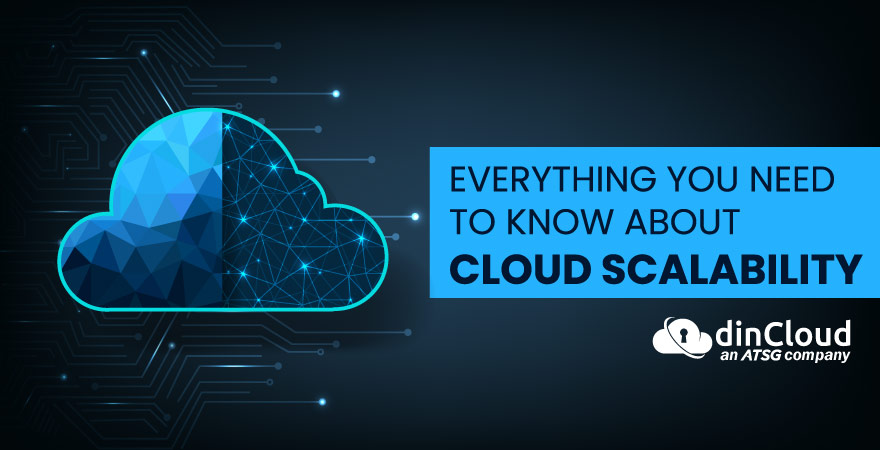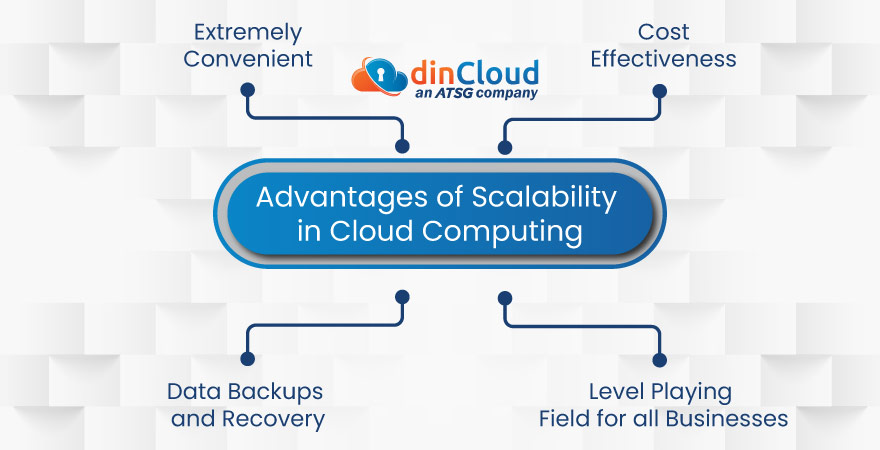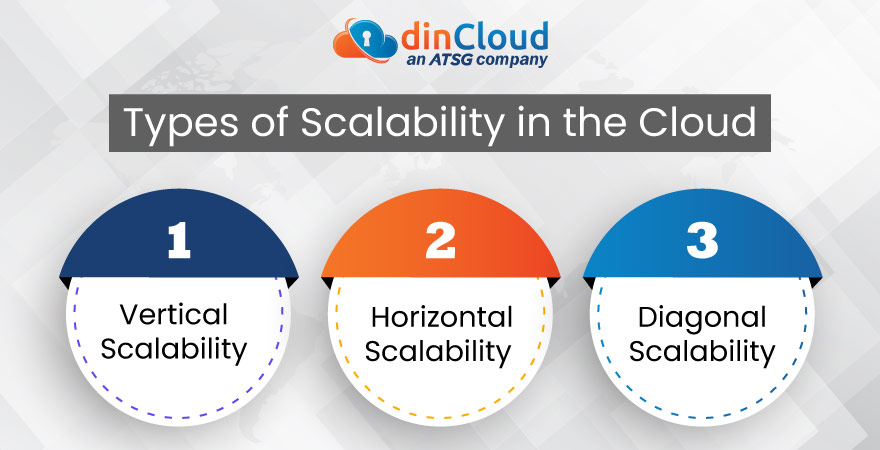“Think Big”, this concise and apt piece of advice is perfect for the top executives and tech architects, who oversee enterprise’s IT stacks. In the present times, it is extremely precarious, yet exhilarating for businesses to take a deep into the ocean of digital technologies. Scalability of the Cloud allows enterprises to “think big”, and inculcate innovative solutions in their overall operations, even if they “start off small”.
The catch here is that scalability cannot be purchased by an enterprise like a commodity. It does not come pre-packaged in the form of a defined IT solution. It involves technical as well as non-technical elements that must co-exist to maximize value for the enterprise.

Around 94% of the enterprises, across the globe, have adopted the Cloud in their operations, in some form or other. Still, it is expected that by 2026, there will be a 16% growth rate in the adoption of Cloud solutions. Cloud Computing offers a number of reasons and incentives that enterprises of all shapes and forms are rightly attracted to this technology. One very important reason is Scalability.
In this post, our focus will primarily be on the scalability aspect of the Cloud, and why is it such a huge selling point for Cloud Computing.
Cloud Scalability Explained
Scalability means that users or enterprises have an option to seamlessly scale their Cloud resources or IT operations, up or down, depending on their changing requirements. This feature is often lacking in On-premise infrastructures. In order to fully grasp the concept of Cloud scalability, we need to understand what are Virtual Machines (VM).
VM and Cloud Scalability
In VM technology, virtualization software is used to divide a physical machine into multiple “virtual” ones, with each VM having its own Operating System (OS) and other resources. All these logically separated Virtual Machines work independently from each other.
VMs are easily movable, and their number can be increased or decreased, as per the enterprise’s requirements. With VMs, organizations are not restricted in terms of their physical environments, as they are software based. If a business wants to expand or scale back its operations, it can simply add more VMs or reduce them from its operations respectively. The scalability of Cloud Architectures can majorly be credited to VMs.
Related Posts:
- Cloud Computing Business Applications and Implementations
- Why do you need Cloud Business Continuity and Disaster Recovery?
- 3 Things Every Small Business Can Do With Hybrid BPM and RPA
- Future-Proof your Business with Cloud Solutions
When enterprises opt for Public Cloud solutions, it becomes even easier for them to scale their operations, because Cloud Service Providers (CSPs) readily have all the required software and hardware resources to quickly and easily adjust the enterprise’s VM needs.
What is Cloud Elasticity?
There is often a lack of clarity on the difference between elasticity and scalability of the Cloud. For a layman, the difference might be negligible, but from the standpoint of a Cloud user or CSP, the difference is substantial.
Sometimes, when there is a sudden spike in an enterprise’s web traffic, let’s assume due to a successful social media campaign, then the elasticity of the Cloud makes resource adjustments in real-time to match the spike in demand.
Scalability, on the other hand, involves planned adjustments to Cloud resources. This is made possible by making strategic forecasts about the future demand for the enterprise’s IT resources. Elasticity is a short-term solution to fix a sudden problem, whereas scalability is a calculated and long-term solution.
Advantages of Scalability in Cloud Computing
Cloud scalability has numerous short-term and long-term benefits for organizations of all sizes, particularly small to medium enterprises (SMEs). Some of them are mentioned below.

1. Extremely Convenient
The most appealing aspect of scalability in Cloud architectures is that it makes everything extremely convenient. Enterprises do not have to wait for months to deploy new IT resources. With scalable Cloud solutions, organizations can instantly avail the necessary resources that can take them to the next level. The best part is that all this is just a few clicks away.
2. Cost Effectiveness
CSPs charge a nominal fee for their Cloud-based services and solutions, and it saves enterprises upfront capital expenses. With scalability, enterprises only pay for what they actually consume, and there is no resource wastage as well. In the long-term, this reduces the enterprise’s overall costs.
3. Data Backups and Recovery
With the scalability feature of the Cloud, the chances for total data loss are negligible. CSPs spread their backups across various geographic locations and offer data redundancy to their users. It is highly unlikely that Disasters, both man-made and natural, can irreversibly impact data in the Cloud, especially in the presence of automatic backups.
4. Level Playing Field for all Businesses
Earlier, only large-sized organizations had the upper hand to leverage all the latest technologies for their businesses. Today, Cloud scalability makes it possible for all businesses to have a fair chance to avail of these technologies, without “paying through their noses”.
Types of Scalability in the Cloud
Now, we will delve into the types of Cloud scalability, to make it easier for you to decide which option perfectly fits your enterprise. The final decision depends on the nature of your business, and the amount of capital that you are ready to invest in your IT infrastructure.

1. Vertical Scalability
In this type of scalability, without the addition of new resources, enterprises scale their current IT infrastructure and resources, up or down, as per their demands. This is done to match up with the dynamic nature of workloads.
Downside: Downtime problems and vendor lock-ins.
2. Horizontal Scalability
Here, new nodes and devices are added to the enterprise’s Cloud infrastructure. Let’s assume that an enterprise is currently using a 2TB virtual server for the management of its web requests. It will horizontally scale its operations if it adds another 1TB server to quickly process the requests.
Downside: Increased cost and Data inconvenience.
3. Diagonal Scalability
In diagonal scalability, new resources can be added, and the capacity of existing resources can also be adjusted, depending upon your enterprise’s growth needs. Basically, it combines the features of both horizontal and vertical scaling.
Downside: Expensive and difficult implementation.
How to Effectively Leverage Cloud Scalability
Now, we will briefly touch upon some tips and tricks that can help you leverage Cloud scalability effectively.
- With the current harsh economic conditions, every single penny is extremely important for an enterprise. It is therefore absolutely vital to make an informed decision about which domains of your business should leverage the Cloud-based services and solutions to generate maximum profits.
- Conduct extensive research, and explore all your options before you make a final decision about which CSP you want to choose. Select the one that aligns with your enterprise’s core needs and budgetary constraints.
- If an enterprise is deploying Cloud solutions for the first time, it is important that they keep their security policies updated, so they can derive the maximum value from the Cloud.
Enterprises should keep all the above-mentioned points in mind, so they can determine if and when to scale their operations.
Conclusion
Migration to Cloud-based architectures is inevitable in today’s digital domain. Organizations can leverage the scalability of Cloud-based solutions to improve their operations, deliver value to customers, and expand their fundamental business models. Cloud scalability allows enterprises to exploit a lot of new opportunities, much faster.
If you want scalable and agile Cloud Computing solutions, contact dinCloud, an ATSG company, for robust Cloud solutions for your enterprise. Our industry-leading solutions come with a fully transparent flat rate pricing model.


